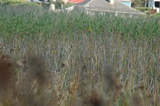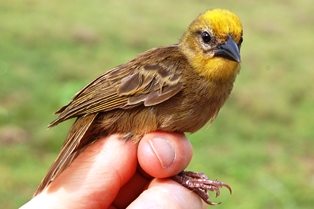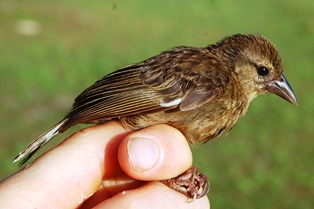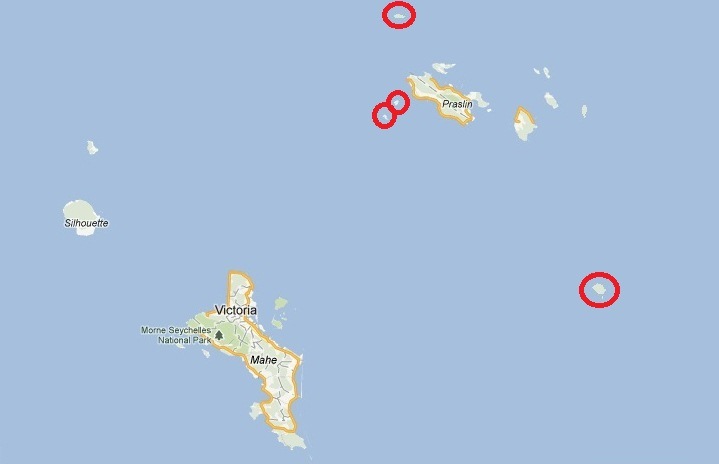Weaver news
|
There are six or seven fody species, genus Foudia, depending on your taxonomic view: (Madagascar) Red Fody, Forest Fody, Seychelles Fody, Rodrigues Fody, Mauritius Fody, Red-headed or Comores Fody, and the Aldabra Fody. This group is native to the islands of the western lndian Ocean (Madagascar, Comoros, Aldabra, the Mascarenes and the Seychelles). Most of the species occur in forest and woodland, which were the original habitats on their islands. All fody species are sexually dimorphic with adult males exhibiting brightly coloured plumage in shades of deep red, orange or bright yellow at least during the breeding season.
The Seychelles Fody Foudia sechellarum, locally known as toc-toc due to its calls, is the least coloured fody species. Adult male toc-tocs (photo above) are mostly olive-grey with the back and wings slightly darker and streaked. The forehead, crown and throat are dull yellow, to a varying extent. The male has a faded black eye-stripe rather than a well-defined one typical of other fodies. Adult female (photo left) and juvenile toc-tocs are mostly olive-grey in colour with a slightly darker back and wings. An unusual feature in this species is the variable number of white primary coverts in many males and some females (see photos here).
The Seychelles Fody is present on six islands: Cousin, Cousine, Fregate, Aride (reintroduced in 2002), d'Arros (introduced in 1965) and Denis (introduced 2004). The map above shows some of these islands circled in red; d'Arros is far to the left off the map, and Denis far to the north. Before European settlement it was probably widely distributed in the Seychelles, but only confirmed from Marianne, Cousin, Cousine and Fregate. By the 1940s it was extinct on Marianne. The increase in the Cousin lsland population, and successful reintroduction to Aride and Denis lslands resulted in the fody being downlisted from Vulnerable to Near threatened. The toc-toc is mainly insectivorous but also feeds on seed, fruit and nectar. It may be unique among weavers in its habit of rarely feeding on the eggs of seabirds. The oldest known Seychelles Fody is at least 9 years old (see here).
It is a socially monogamous weaver. The peak breeding season, between May and October, coincides with the southeast monsoon or dry season but toc-tocs may breeding all year round. One, but more often two eggs are laid in a globular, enclosed, woven nest (photo left) and incubation is done entirely by the female. Both sexes participate in nest building, nestling and fledgling care. After fledging, parents attend their young for an average of 12 weeks, much longer than in other weavers.
See a video clip of the antics of a pair of Seychelles Fodies collecting nest material here. See a summary of PHOWN records for the Seychelles Fody here. PHOWN records for species Previous Wedn: Yellow-crowned Bishop Full species list |














